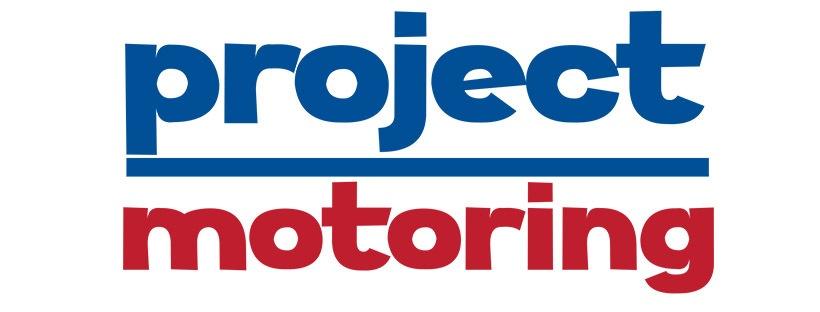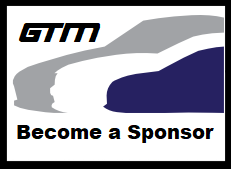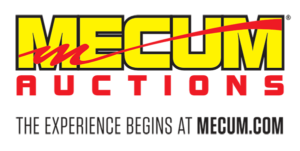“…When you first start out in Motorsports, the essentials are still the same: better Brake Pads, stickier Tires and Seat Time.”
Continuing where Eric M.’s, June Tire Article left off, this week we’ll be covering Brake Pads.
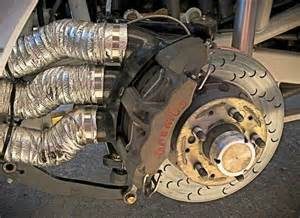
For those of you who have had the pleasure of riding in one of my vehicles, you know that I have a reputation. It isn’t for how fast my cars are (because they aren’t) but I have a reputation for “dropping anchor.” I brake hard, and late, because I have confidence in my equipment. I only have such confidence because I have invested the time and research into upgrading my brakes. New brake pads alone aren’t the answer, as there are a few extras to consider when upgrading your brakes:
Brake Fluid: 99% of vehicles come from the factory with DOT3 brake fluid. DOT3 fluid meets all of the minimum laws and requirements for efficient braking under normal road conditions. However, under extreme/track use it has a tendency to boil quickly adding to a condition known as “Brake Fade.” When upgrading brake fluid, consider upgrading to a high-temp DOT4 brake fluid such as ATE GOLD or Motul RBF-600. For dedicated track cars we recommend considering: Motul RBF-660 or Castrol SRF.
Brake Lines: Upgrading, at minimum, your front brake lines to stainless steel versions will go the farthest to eliminate a lot of the unpredictability in brake pedal feel that most novice to intermediate drivers will experience. (Be sure to check with your local tuner or race shop for availability).
Pad Compounds: Brake pads comes in all colors and flavors. They can be classified into Original Equipment by Manufacturer (OEM), Mixed-Use Pads, and Track-Only pads.
Brake System (Calipers): In our case we won’t be focusing on “upgrading the brakes” from a hardware perspective. We only recommend this for drivers who have invested a lot of seat time in their vehicle and have learned how to exceed the ability of their Original Equipment (OE). Know that in some extreme cases there are vehicles that are paired with “undersized” brakes in proportion to the weight of the car (e.g.: single piston, 10” front brakes on a 3100 lb vehicle). This might provide OK-to-marginal braking on the street, but will be inadequate for track use. In most cases, a hardware upgrade will be a hardware package from a 3rd party vendor such as Brembo, Porsche, StopTech, or Wilwood. Consult with your favorite tuner or race shop about what system pairs best with your vehicle.
Brake Cooling Ducts: The idea behind Brake Cooling Ducts is quite simple: decrease the heat at the brakes and reduce temperatures to keep the brake system within an optimal operating range. Singular Motorsports has a great blog post on Brake Ducts.
Braking Terminology
Brake Fade: “The reduction in stopping power that can occur after repeated or sustained application of the brakes, especially in high load or high speed conditions.” (Source: Wikipedia); Brake Fade is a result of the pad material exceeding its heat threshold and becoming ineffective. Taking a cool down lap or two simulating street driving will allow the pads to cool down enough to be used again. Note that once a pad has suffered from Brake Fade it’s very easy for the compound to begin to deteriorate or, even worse, “glaze” (Note: a glazed pad has been overheated and cooled quickly and becomes shiny and unable to grab the rotor effectively. Glazing is an extreme case, but the end result is much like that of pottery in a kiln).
Warped Rotors: The most common sign of a warped brake rotor is vibration through the brake pedal when pressure is applied on them and can also be felt in the steering wheel. Sometimes you can feel it even when there is only a light amount of pedal pressure on the brakes. Other times, it can only be felt when slowing down drastically from higher speeds. However, a “warped rotor” is a bit of misnomer, as a majority of the time this sensation is a result of brake pad material transfer and build-up on the rotor. Swapping back and forth between pad compounds on the same rotors is a major cause of this issue. Try and “re-bed” your pads to clear the build-up. You might have to take the pads off and rough them up, before re-bedding as well.
Bedding Pads: Tire Rack’s article on proper Bedding of Pads, covers various types of pads and the bedding procedures. Commit these to memory for your pad type.
Uneven Pad Wear: Many cars suffer from uneven pad wear. Two primary causes of uneven wear result from single piston calipers (aka “side pull brake”) where the inner pad — which is doing all the work — will be thinner than the outer pad. This is a natural occurrence for this type of brake caliper. If the pads are not side specific (“directional”), we recommend flipping them from inside-to-outside to get more life out of the pads. The other common occurrence of uneven pad wear comes from larger 4 and 6 piston calipers (Brembo, Porsche, etc), where the “leading edge” of the pad will wear out quicker than the trailing edge. This is a result of how the fluid moves through the caliper and actuates the pistons. There is no way to fix this, so you must be diligent in rotating your pads to get even wear out of them. Generally, these types of braking systems make it easy to flip/rotate the pads between sessions, days, or events.
Boil-back: Boil-back is one of the causes of brake fade. Improper or old brake fluid can overheat, causing it to boil/burn and resulting in a mushy pedal. The pad grip will be consistent but the pedal feel is terrible. Often seen when the proper steps haven’t been taken to upgrade the fluids for track-only pads.
Knock-back: Knock-back is an uncommon situation in which the fluid/piston/pad will retract from the rotor creating a dead zone before the pads are able to grab effectively again. The folks over at Stop-Tech have a great write-up on this condition. Mastering a technique like left-foot braking will aide you if your vehicle is prone to knock-back.
ABS: Without getting into a long debate about the merits and problems of ABS at the track, know that even though you might not feel the ABS working on-track, it’s still active. ABS adds more heat and pressure on the fluid and pads. Learning techniques like threshold braking (although difficult to master) will help in Pad/Fluid longevity for all vehicles.
Traction Control & Stability Management: As much as Traction and Stability Management (“The Nannies”) can keep even unruly vehicles manageable, it wreaks havoc on the braking system. A majority of the TCS systems leverage the ABS to stabilize the vehicle. This means the car is using the brakes even when you are not! In a lot of systems, the TCS controllers will use the rear brakes for a “less intrusive” nanny. As a result, the rear pads get overused, leaving most folks with next-to-no rear pad material remaining at the end of a long track day. If you are comfortable and have the necessary seat time, we recommend disabling any nannies that utilize your braking system.
Braking Techniques
Threshold Braking: “Threshold or limit braking is a driving technique most commonly used in motor racing, but also practiced in road vehicles to slow a vehicle at the maximum rate using the brakes. The technique involves the driver controlling the brake pedal (or lever) pressure to maximize the braking force developed by the tires. The optimal amount of braking force is developed at the point when the wheel just begins to slip” (Source: Wikipedia) — This technique is difficult to master and takes a lot of practice. It is especially important in non-ABS cars (e.g.: Miata). This technique can also be used in cars with ABS, but requires a lot of feel to determine where the point in the pedal travel is “just before” the ABS kicks in. Practice makes perfect with threshold braking.
Trail Braking: “Trail braking is a motorcycle riding and driving technique where the brakes are used beyond the entrance to a turn and are gradually released up to the point of apex. In a broader scope, trailing off the braking pressure either while straight line braking or, as above, after turn in has begun, allows for a less abrupt and more accurate final corner entry speed adjustment.” (Source: Wikipedia) Trail Braking is probably one of the most difficult braking techniques to master and is not recommended for folks that are just starting out in motorsport, as it can have some unpredictable consequences if executed improperly. But for the purposes of this discussion, know that Trail Braking does add additional pad consumption and premature wear.
Left Foot Braking: The art of using one’s left foot for braking and clutch while only using one’s right foot for acceleration. Jalopnik’s article covers a lot of the why’s/why nots of Left Foot Braking. Within GTM you can always reach out to Bruce S. for an expert’s lesson in mastering left foot braking.
Picking the Right Brake Pads
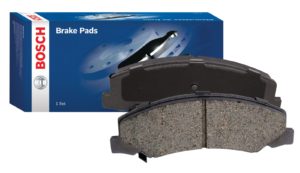
Original Equipment by Manufacturer (OEM)
OEM or store-brand replacement pads are very suitable for street use, and can give you acceptable braking distances while cold, like an emergency stop on the highway. On track, they are very prone to fade, rapid loss of material, and material transfer to the rotors when hot due to the pad material actually breaking down and sometimes even catching on fire.
I started my track-life using OEM pads in my MkV VW Rabbit, even after I upgraded to larger R32 front brakes. I was regularly swapping front rotors and having the rotors milled on my vehicle while using OEM pads because the pad transfer would become so severe that braking was inconsistent and there were heavy vibrations (“warping”) coming through the steering wheel.
Drawbacks:
- Rapid fade, material transfer, and fast consumption
- Can warp rotors quickly.
Advantages:
- Cheap and easy to find
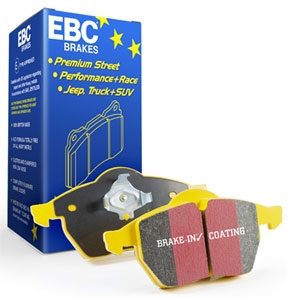
Mixed-Use Pads
If you want a pad with higher performance but aren’t ready for a dedicated track-use pad, there are options out there. Much like all-season tires, these pads make trade-offs that might be okay for some people who occasionally track their car but still drive it on the street and can’t, or don’t want to, change their pads at the track. Mixed-use pads can be very suitable for intermediate to advanced drivers, but they can fade with a lot of heat and they don’t have as extreme of a bite as true track pads.
Drawbacks:
- May produce additional/excessive brake dust
- May squeal, especially for some time after a track day
Advantages:
- More resistant to heat fade
- Improved longevity during track use
- Better initial bite
Suggestions:
- EBC Yellow
- Hawk HP+
- Carbotech AX-6
I personally have a lot of experience with EBC Yellow pads. In fact, I am using them on “Fast Beddie” (2003 Turbo Beetle S), though I am now looking for a track-oriented pad since that car is almost exclusively a track car.
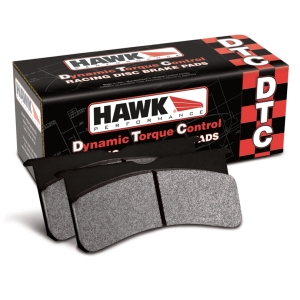
Track-only Pads
Track only pads really are intended for track use. You might want to say, “That’s crazy, if they are good enough for the track they are definitely good enough for the street.” However, they are intended for track use for a reason. First, they are so loud that everyone within earshot can hear when you are braking. They are often terrible at stopping the car when they are “cold” and might not grab for a “panic stop” under standard driving. The same way you have to take it easier on the track on cold tires, you have warm up track-only brake pads for them to work effectively. For example, Hawk DTC-60 pads specify a MINIMUM temperature of 400F for effectiveness. You will often see people dragging their brake pedal down a straightaway on the warm up lap to get some heat in the brakes.
Drawbacks:
- TERRIBLE when cold (bad for street use)
- Expensive
- Can be tough on rotors
- Requires DOT4 or better brake fluid to maintain proper and consistent operation.
Advantages:
- Unmatched braking torque
- High heat resistance
- Possibility for season-long pad longevity (dependent on compound)
Suggestions:
- Hawk DTC-50/60/70
- EBC Bluestuff/Orangestuff
- Porterfield R4E
- Performance Friction Compound (PFC) – Great variety
- Carbotech X10/XP12
Life with Dedicated Track Pads
Once you’ve moved away from Mixed-Use pads to dedicated track pads, there is a lot of trial and error until you can find a pad that really aligns itself well with your hardware and your driving style. A pad you would use on a BMW might not be appropriate for a Porsche or a Corvette. However, as with almost all things motorsport, everyone will have their own opinion about what works best. What works best for me in terms of bite, heat resistance, longevity, and cost, might not work for you. We recommend talking to your peers and seeing what they are using. Hearing what they’ve figured out for their set-up, including if they have received recommendations from a race team or tuner shop, is a good starting point.
I have personally used DTC-60, PFC-08 and Carbotech XP-10. I found DTC-60s to come up short in the longevity department. Their bite was excellent, but I just couldn’t afford to keep changing pads at that frequency. Per a recommendation, I tried PFC-08 pads and they have been very reliable with amazing longevity because they are designed to be an endurance brake pad. So far, I have also been happy with the Carbotech XP-10 pads but I have not put enough miles on them to fully evaluate their longevity compared to the PFC-08s. It all comes down to personal preference for initial bite, and how you want the brakes to perform in wear and heat resistance. Not only can personal preference play into this decision, but also the vehicle you drive, pad availability, and how well that specific compound works for the handling characteristics under braking for your specific vehicle.
Additional Information
We hope this article has given you a starting point for your brake upgrade research and the references provided below can give you more technical specifications of the available products mentioned in this write-up.
References:







